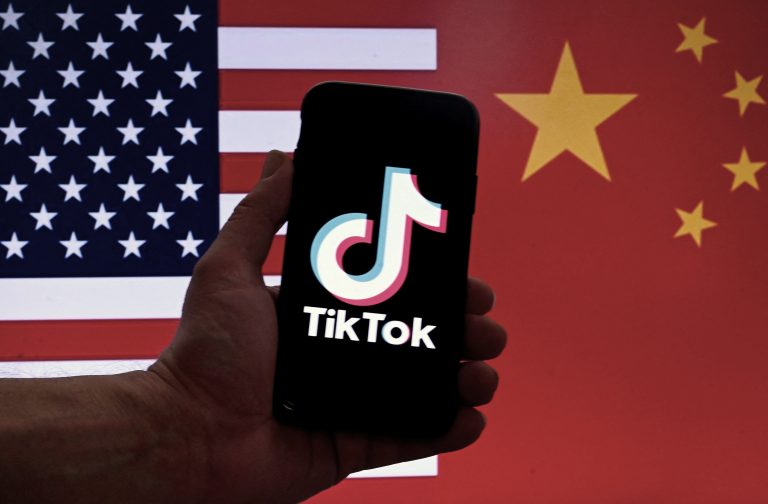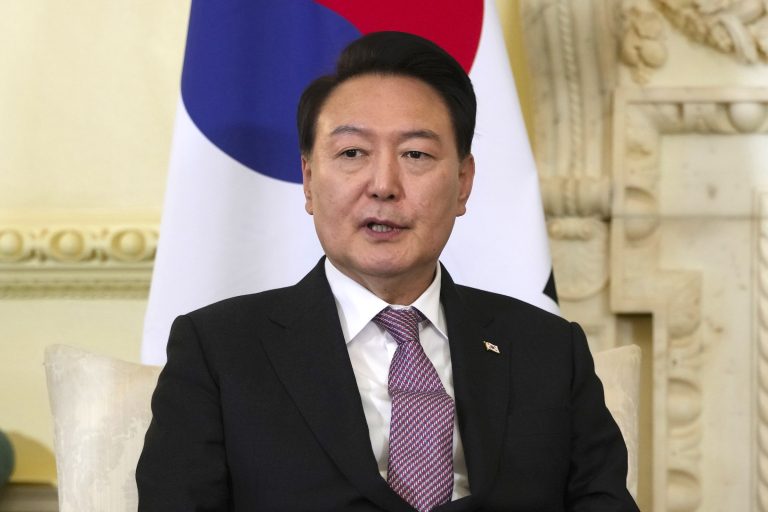Most analyses of the Chinese economy belong to one of two types: those that come from the venture capital industry and those created by think tanks. The venture capitalists are pessimistic about the Chinese economy’s short-term prospects: as Lu Wang & Elaine Chen note in a Bloomberg article published Sept. 4, data compiled by Goldman Sachs Group Inc. shows that U.S. hedge funds are reducing their exposure to U.S. companies that rely heavily on China for their business.
“Hedge funds that make both bullish and bearish wagers on stocks are slashing their exposure to American companies that lean heavily on China for businesses, such as Las Vegas Sands Corp. and General Motors Co.,” Wang and Chen wrote per information from Goldman Sachs Group Inc.’s prime brokerage unit.
Though Wang and Chen emphasized that the rapid withdrawal of hedge funds from China is more a reflection of immediate concerns about blanket regulatory suppression by leaders in Beijing, observers and reporters predicting gloom may have cast premature judgment on China’s economic prospects.
Those looking at the Chinese economy often neglect the political factors at play, and in this case, they have ignored the Biden administration’s tendency to learn from and imitate the “China model” of economic policy.
Learning from Beijing
In terms of the government’s investment in infrastructure and economic intervention, the Biden administration has been emulating Beijing. As I pointed out in my April 7 article in The Epoch Times, “Biden’s ‘Great Leap Forward’ Will Encounter an Impassable Barrier,” the total $4.3 trillion announced by the Biden administration — including an $2.3 trillion infrastructure plan over eight years and a $2-trillion economic stimulus plan — all follow the Chinese pattern.
Success
You are now signed up for our newsletter
Success
Check your email to complete sign up
But at that time, the U.S. media and economic circles were mainly considering the scale of debt. More than four months have passed and Biden’s industrial policies and directions have become increasingly clear. The Wall Street Journal (WSJ) finally discovered that the Biden administration was copying China’s operations. Starting in July, numerous articles published by the WSJ analyzed the United States’ mirroring of the China model, especially the Chinese government’s industrial policy and funding support methods.
In the WSJ’s article “China’s Industrial Planning Evolves, Stirring US Concerns” published on Sept. 5, the main point is that China and the United States are taking turns copying each other’s operations;
“Chinese central planning once highlighted targets for farm and factory production, Soviet-style. Beijing still uses five-year plans but now directs resources into basic scientific research with industrial applications,” the Journal reported, adding that “China’s foray into areas like artificial intelligence and robotics once dominated by the U.S. helps explain the Biden administration’s tilt toward industrial development policies, like spending government money to reassert competitiveness in semiconductor production.”

The Biden administration feels the crisis and is now copying China’s methods, such as using government funds to consolidate its competitiveness in semiconductor production. The article reads: “Decades of neglect and disinvestment,” with President Joe Biden lamenting in June that current operations “have left us at a competitive disadvantage as countries across the globe, like China, have poured money and focus into new technologies and industries, leaving us at real risk of being left behind.”
In the Wall Street Journal’s July 24 column, “What the U.S. Can Learn From China’s Industrial Policy Mistakes—and Successes,” the author admits that the Biden administration’s huge investment in infrastructure and the increase in government investment in the semiconductor industry are all “copying China’s operations,” but he still gives it a high degree of affirmation: “Whatever Washington decides about directly supporting specific industries, getting the basics right can’t hurt, and it could make all the difference in the long run.”
China’s industrial subsidy policy: defects from the past become the focus of today’s operations
China hopes that the manufacturing industry will provoke the backbone of the economy, rather than the Internet and various related service industries. It’s the transformation from “the virtual to the real” I said in my article, “The immediate goal of the rectification of the Chinese industry: from the virtual to the real,” published in The Epoch Times on Aug. 13. This makes Western countries feel in crisis.
In the WSJ’s article “Industrial Policy’ Is Back: The West Dusts Off Old Idea to Counter China” published on July 29, The WSJ clearly stated one point at the very beginning: “The U.S. and its allies have long pressed China to stop helping favored industries with subsidies, government preferences and other interventions.”
Now they are beginning to copy it. Last month, the U.S. Senate voted for direct industry subsidies with little precedent. The Senate approved $52 billion for new semiconductor fabrication plants, called “fabs.”
Democratic Senator Mark Warner, a former venture capitalist and former governor of Virginia, is the proponent and main promoter of the “U.S. Innovation and Competition Act.” Warner said, “I’ve been impressed with the Chinese model.”
He believes that the Chinese government ensures that Chinese companies, rather than foreign companies, become the dominant role in the domestic market, effectively ensuring that Chinese companies occupy a large market share in the global market. He also said, “It’s hard to see how a company in America or any normal, traditional market-based economy can compete against that kind of juggernaut and win.”
Meanwhile, the White House has proposed a series of tools to promote domestic production in four industries deemed critical to the supply chain, which are semiconductors, batteries, specialty minerals, and pharmaceutical raw materials.
Some other developed countries have also introduced similar practices. The European Union (EU) is committed to nearly doubling its share of global semiconductor manufacturing capacity to 20 percent. South Korea has approved a semiconductor industry support measure of up to $65 billion; Japan has promised to support the semiconductor industry comparable to that of other countries, and plans to turn Japan into a datacenter hub in Asia.
What is more interesting is that while state-owned enterprises have been seen as a flaw in the Chinese model, the WSJ article above finds advantages, one of which is government ownership of industrial enterprises: “Western governments are reluctant to take ownership of industrial enterprises, and doing so is critical to China’s industrial policy. According to a study by Georgetown University’s Center for Security and Emerging Technologies, not only are many large Chinese companies state-owned, but Chinese governments at all levels have established 1,741 industry-led funds — actually government-backed private equity funds — with a planned deployment of $1.6 trillion.
“Although often uncoordinated and duplicative, this type of ownership gives the Chinese authorities significant influence over corporate decisions, blurring the lines between public and private ownership. Government investors have also tolerated losses for much longer than Western shareholders.”
State-owned enterprises have been criticized by Western economics circles and reformed Chinese economists because of their inefficient operation, high input and low output. In 2001, when the U.S.-led WTO recruited China as a member, the excessive proportion of state-owned enterprises and government intervention in the economy — such as industrial subsidies — were shortcomings that the WTO required China to reform. China promised to make corresponding reforms. Only after the World Bank experts’ inspection was China allowed to join the WTO. Now, 20 years later, the shortcomings have become the advantages for the United States to learn. This is really ironic.
Political connotations of the ‘China model’
What is the China model? The core is the general goal set by Deng Xiaoping for China’s reform: an authoritarian regime (the government allocates resources) plus a market economy under administrative control. In short, it is a market economy of imperfect competition under administrative control. Western political scientists regard it as a kind of “authoritarian modernization” or “legitimizing authoritarianism.”
The first to affirm the China model was Joshua Cooper Ramo, a senior consultant at Goldman Sachs. In 2004, he published an investigative paper, “The Beijing Consensus” at the Foreign Policy Centre in London, UK.
He pointed out that through hard work, initiative, innovation, and bold practice, China has found a development model suitable for its own national conditions. He called this model “the Beijing Consensus” and highly affirmed it.
“The Beijing Consensus” has characteristics such as hard work, initiative, innovation and bold experiments, such as the establishment of special economic zones. It resolutely defends national sovereignty and interests, such as how Beijing handles the Taiwan issue. Implements gradual progress such as “crossing the river by feeling the stones,” and accumulating energy and having tools with asymmetric power, such as accumulating huge foreign exchange reserves of U.S. dollars.
It not only pays attention to economic development and social change, but also involves politics, quality of life, and global balance of power, etc. It embodies a development idea of seeking just and high-quality growth.
In Joshua Cooper’s view, China’s experience based on “the Beijing Consensus” is of universal value, and many of them can be used for reference by other developing countries. It can be regarded as a model for some backward countries to seek economic growth and improve people’s lives.
At that time, “the Beijing Consensus” attracted great attention from the international community, but Western society thought that it had nothing to do with developed countries and at best could probably become a learning model for developing countries.
New Leftist scholars in China, such as Cui Zhiyuan and others have written monographs, believing that “the Beijing Consensus” would replace “the Washington Consensus.” Scholars in China on average believed that it was a work to flatter the Beijing authorities, and Beijing high-level officials regarded it more as propaganda rather than a goal. At that time, no one could have expected that in less than 20 years, there would be a Biden administration in the United States that would copy China’s operation and learn the China model.
However, the “China model” itself is “authoritarian politics plus market economy under administrative control,” which has very strong political connotations. In the process of controlling the distribution of resources, the government will continue to strengthen social control from all aspects, which will result in the United States’ politics converging to the political control of the China model. This concern is not an unreasonable worry, but a political trend that is bound to happen.














